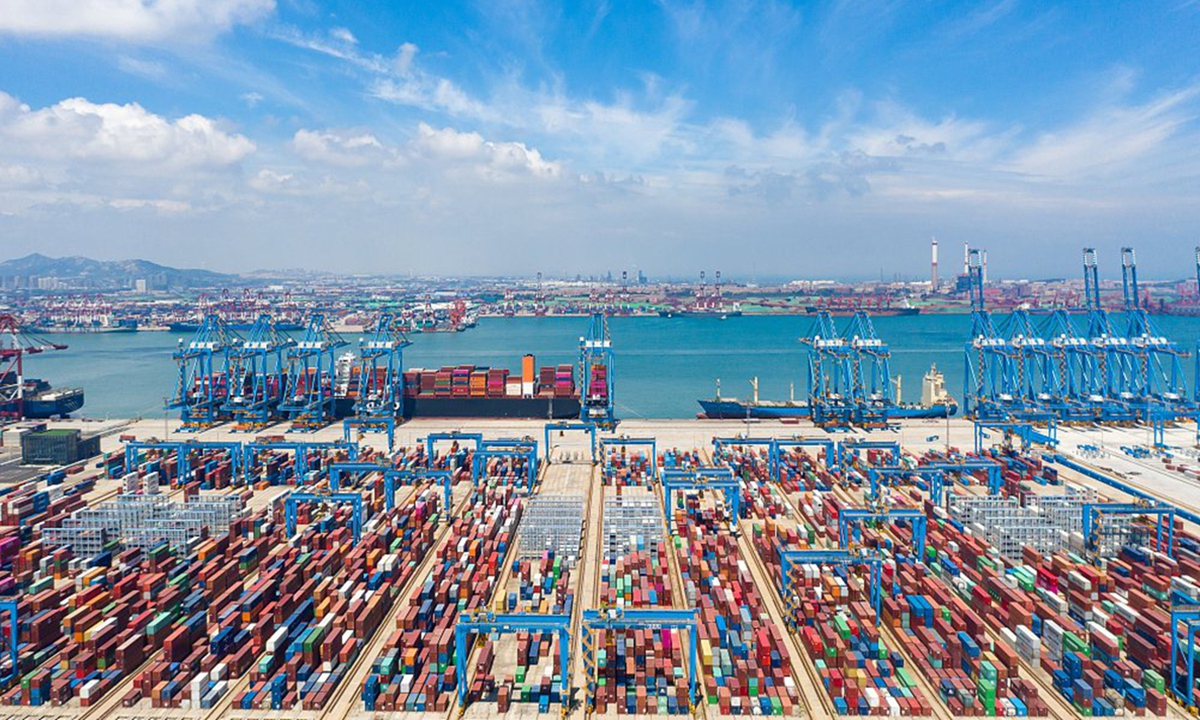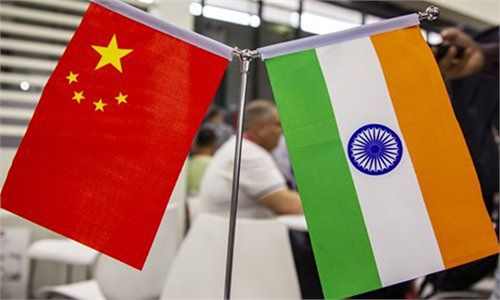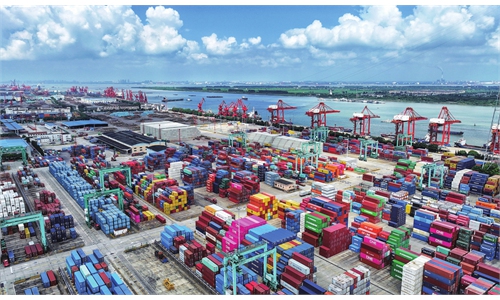
China trade economy File photo: VCG
It is a widely recognized trend that global trade flows are waning significantly this year, with varying effects on different economies. WTO economists said in their April forecast that global trade growth in 2023 is expected to slow to 1.7 percent, compared with an average of 2.6 percent for the past 12 years.Given the challenges and uncertainties posed by the latest wave of anti-globalization, it's naive of some US media outlets to simply claim that the US can benefit more while export-dependent economies like China will bear the brunt of trade slumps. The latest example of such thinking is an article entitled "Trade slump reshuffles world's economic cards in favor of US" published by The Wall Street Journal (WSJ) on Saturday, which asserted that "Large, export-dependent economies from China to Germany are main losers from the new trend ... 'extroverted' economies that have traditionally recorded trade surpluses and are now seeing their growth lag behind those of the US and India."
This is not the first time that some US media outlets have tried to use the comparison between the Chinese and US economies to badmouth China's economic prospects, but the WSJ article is clearly a lame attempt. The biggest problem with the "US up, China down" rhetoric is that evaluating a country's economic growth is a complex process, and simply measuring it by whether it is an export-dependent economy is one-sided and lacks objectivity.
Perhaps due to its long-term geopolitical bias and arrogance, the WSJ article didn't mention that the root cause of the global trade slowdown is weak demand from the US and other Western countries, and nor did it recognize the potential and vitality in China's trade transformation.
There is no denying that export-oriented countries have seen their exports, traditionally to the US and other Western countries, slump significantly. According to Vietnamese customs data, in the first eight months of this year, Vietnam's total exports fell by 10 percent year-on-year. Since the US remains the largest export market for Vietnamese goods, it is not hard to reach the conclusion that US demand is on the decline this year, which more or less reflects the risks to its future growth. This is also why it is absurd to use the slowdown in Western imports to badmouth the Chinese economy, as the main reason for the decline in Chinese exports is Western economic sluggishness.
Of course, the global economic slowdown is only part of the reason for the recent decline in Chinese exports. Another important reason is that the US is still waging trade suppression against China through additional tariffs, various sanctions and restrictions against Chinese goods - including but not limited to Xinjiang cotton products - and the restructuring of industrial and supply chains.
But China won't be intimidated by the challenges and sanctions. While some in the West may still focus on the impact of trade slumps and reshuffles on China's exports, what they don't see is the gradual strengthening of Chinese imports and the rise in regional supply chains as a result of China's trade transformation.
One major driver of China's trade transformation is its expanding domestic demand. As one of the world's largest consumer markets, the growth of China's consumer demand has become increasingly important and integrated with Asian industrial and supply chains. Furthermore, products made in China are continuously showing strong competitiveness in the global market.
China's trade transformation also includes the expansion of its trading partners and exploration of the global markets. China has taken an active part in the construction and reform of the global trading system by participating in multilateral trade cooperation mechanisms such as Asia-Pacific Economic Cooperation and Regional Comprehensive Economic Partnership. Also, China has actively promoted economic and trade cooperation with countries and regions along the Belt and Road Initiative routes. These multilateral trade cooperation efforts have provided broader space for China's trade transformation and also helped offset the negative impact of the US-led anti-globalization drive.



